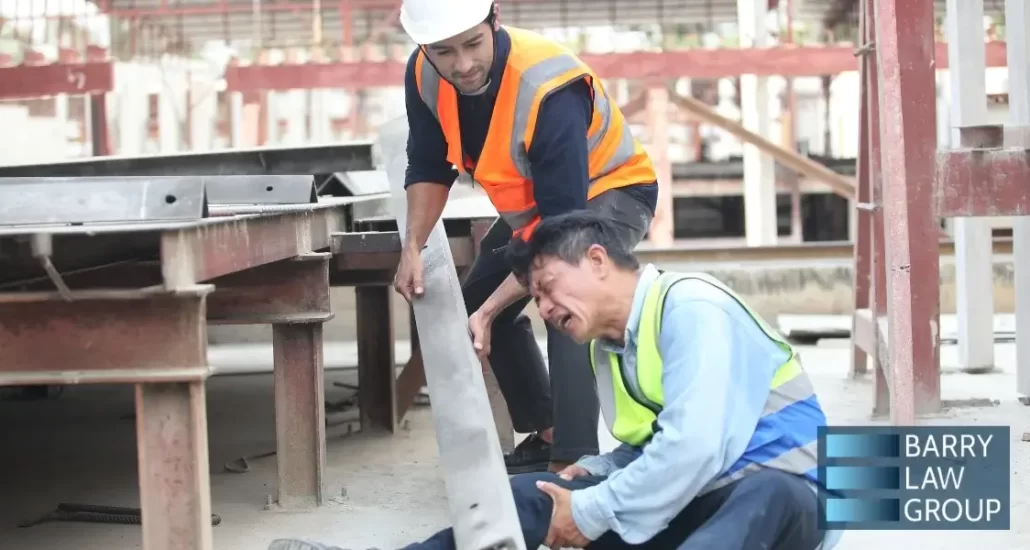Understanding Construction Accident Safety Regulations in California

Construction sites are inherently dangerous, which is why safety regulations play such an important role in cutting down the number of preventable injuries that happen in cities like Ventura and Los Angeles. If you were injured on a construction site, understanding construction accident safety regulations in California can help you determine if your employer followed state and federal regulations. If not, they may be financially liable for the harm you suffered.
The Role of Cal/OSHA in Construction Safety
California’s construction sites are governed by safety standards that are enforced by the California Division of Occupational Safety and Health, commonly known as Cal/OSHA. This agency is responsible for regulating job site conditions and making sure that employers follow safety laws.
Common rules include requiring employers to:
- Identify and correct hazardous conditions before they lead to injury
- Provide proper personal protective equipment (PPE), such as hard hats, gloves, and harnesses
- Ensure machinery and tools are safe, maintained, and used correctly
- Implement and maintain a written Injury and Illness Prevention Program (IIPP)
- Post visible warnings and safety signage around dangerous areas
- Train workers on safe work practices, including fall prevention and equipment handling
- Investigate workplace injuries and illnesses to prevent future incidents
These laws include rules that govern what types of protections are required on work sites and how scaffolding should be set up, among other provisions. In 2025, Cal/OSHA increased its penalties for violations. With fines of up to $162,851 for willful or repeat violations, Cal/OSHA’s enforcement underscores the necessity of adhering to California workers’ compensation laws and regulations. a clear warning to employers who fail to follow state safety rules.
Fatalities and Common Construction Hazards at Construction Sites
Construction remains the deadliest industry in California. In 2023, construction site deaths accounted for 78 workplace fatalities, which was far more than in any other field. Of those deaths, 34 resulted from slip and fall or trips. Quite often, those incidents are preventable, yet when they do occur. Such incidents can cause a wide range of injuries, from personal injury and knee injury to foot and ankle injury, hand injury, amputation injury, and brain injury.
One recent tragedy is a reminder of the dangers posed at construction sites and the heavy fines with which construction site companies can be hit. In March 2025, a California construction company was cited for $157,500 after a trench collapsed at a job site. A concrete pipe shifted during the collapse, pinning and killing a worker. This type of accident may have been preventable if trench safety rules were followed, including shoring, inspections, and soil assessments.
Legal Options After a Construction Injury
California continues to see aggressive growth in the construction sector, especially in high-demand areas. In Woodland Hills alone, there are more than 3,400 active construction jobs, with new projects underway across residential, commercial, and public developments.
Workers who are harmed on construction sites may suffer injuries ranging from on-the-job back, neck, and spine injury to permanent disability, and have recourse to pursue compensation with the help of an attorney. A construction accident lawyer can collect evidence, analyze safety reports, and guide you on when to hire a workers’ comp lawyer in California for maximum recovery.
FAQs:
Q: What Safety Rules Do Construction Employers Have to Follow in California?
A: Employers in California have to follow basic safety rules like keeping the worksite free of known hazards, providing the right safety gear, and making sure equipment works properly. Other requirements include ensuring that machinery and tools are safe and well-maintained.
They should post signage around dangerous areas. They’re also expected to put together a safety plan and make sure everyone knows how to avoid common risks. It’s all about preventing injuries before they happen.
Q: Do Workers Have to Be Trained in Safety?
A: Yes, they do. Employers are supposed to train workers on how to do their jobs safely. That includes how to handle tools, use ladders, and avoid things like falls or electric shocks. If you didn’t get any training or were thrown into a dangerous task without instructions, that’s a serious issue. A lapse in this area could lead to financial liabilities for the owner of the company if there’s an injury. Employers must train staff in safe equipment use and fall prevention, consider questions to ask a work injury lawyer in Encino if you never received proper safety instruction.
Q: What Should I Do If I Get Hurt on a Job Site?
A: First, report the injury to your supervisor right away. Seek medical care, even if it feels minor. When you can, go back and document the incident site by taking photos. If the injury is serious or someone else caused it, talk to a lawyer who handles construction accidents. They can explain your rights and help you figure out if you qualify for more than just workers’ comp.
Q: What Safety Rules Do Construction Employers Have to Follow in California?
A: Employers have to follow safety rules set by Cal/OSHA, which include identifying job site hazards, providing protective gear like hard hats and harnesses, and making sure tools and machinery are safe to use. They also need to create an Injury and Illness Prevention Program (IIPP), post warning signs where needed, and make sure workers know what to do in dangerous situations. If they skip these steps, they can be held responsible when accidents happen.
Q: Who Makes Sure Construction Sites Are Safe?
A: It’s mainly up to the employer to keep the site safe, but inspectors can step in if something goes wrong. If someone reports unsafe conditions or there’s a bad accident, a state agency may come out to investigate. They’re looking for things like missing safety gear or problems with equipment that could lead to someone getting hurt. While employers are responsible for safety, Cal/OSHA inspectors enforce compliance. Understanding how workers’ comp works in California can help you navigate the compensation process if violations are found.
Schedule Your Construction Site Injury Consultation Today
After a construction site injury, it can be difficult to know who is responsible or whether safety regulations were violated. In a busy area like Tarzana, multiple parties may have played a role in what happened. The injury lawyers at Barry Law Group can investigate these incidents thoroughly and calculate the full impact of your injuries.
Our team knows how to calculate what your case is truly worth and how to hold negligent parties accountable. If you were hurt while working on or near a construction site, you deserve clear answers and strong representation. Contact Barry Law Group today to schedule your consultation. We will review the details, explain your legal options, and guide you toward a clear path forward.
Success of Your
Legal Matter.
Barry Law Group is comprised of attorneys and longtime staff members who are committed to the success of your legal matter. The firm understands that for most litigation is uncharted worrisome and often terrifying.



